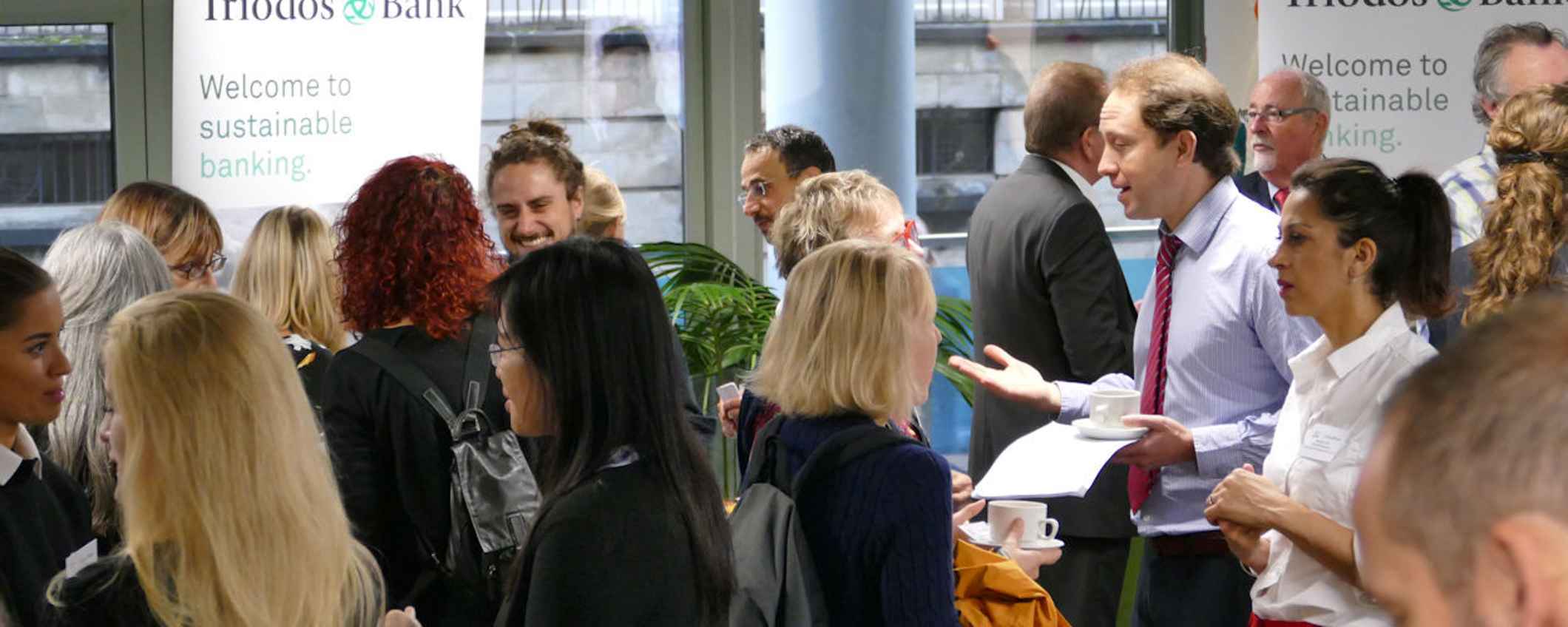These were some of the topics of conversation at our recent networking breakfast. Held as part of Healthy City Week, and in collaboration with Go Green, we welcomed over 60 guests from local businesses to share their insights into what makes a healthy workplace.
Buildings and their surroundings have the potential to make people feel great, help get the job done and enable businesses to thrive
Building happiness
Green, well-ventilated offices can improve workers cognitive brains scores. There are clear business benefits to improving the work environment. Robert Cooke is a Doctor of engineering and a Chartered energy engineer leading from BuroHappold Engineering:
“We spend our lives in and around buildings. The quality of the environment inside and outside impacts our health and how we feel. In turn, our health and wellbeing impacts on our productivity. Buildings and their surroundings have the potential to make people feel great, help get the job done and enable businesses to thrive.”
Robert believes in a holistic approach to building design, rather than focussing on elements such as energy efficiency or noise pollution in isolation. Research supports the business case:
- a 20-30% reduction in sickness absence can be achieved by encouraging staff to be healthy and active (MIT Human Dynamics).
- 35% of the variation in a team’s performance can be accounted for simply by the number of face-to-face exchanges among team members (Washington State University).
- a 12% increase in productivity occurs when plants are introduced into the workplace (Washington State University).
Five Ways to Wellbeing
Nicola Rich, HR Manager at Stride Treglown, a Bristol-based firm of architects, explained some of the steps she makes towards workplace wellbeing.
“Happiness is not having a lot of privilege or money. It’s not constant pleasure. It’s a broader thing: Our ability to connect with others, to have meaningful relationships, to have a community. That’s sort of the recipe for happiness.”
Nicola drew from the “Five Ways to Wellbeing” framework; a set of evidenced-based actions identified by the New Economics Forum which promote people’s wellbeing.
- Connect with the people around you; at home, work, school or in the local community. Building these connections will support and enrich you every day.
- Be active. Exercising makes you feel good, so discover a physical activity you enjoy and one that suits your level of mobility and fitness.
- Take notice. Be aware of the world around you and what you are feeling. Reflecting on your experiences will help you appreciate what matters to you.
- Keep learning. New skills will make you more confident, as well as being fun.
- Give. Do something nice for a friend or a stranger, or volunteer your time. Seeing yourself, and your happiness, linked to the wider community can be incredibly rewarding.
Using this framework, Nicola introduced a series of co-worker led initiatives including upcycling workshops, communal allotment work and volunteering for local organisations.
Another popular initiative was the introduction of an employee-managed bee hive. In learning how to care for the bees, employees could try something new together, while also sharing the honey produced.
Mental Health First Aid Training
Mental health is often misunderstood in the workplace. At any one time, around 18% of adults of working age are suffering from a mental health related problem, and yet many feel unable to seek help at work.
Mental Health First Aid teaches co-workers how to identify, understand and respond to the signs that someone experiencing a mental health crisis, such as panic attacks, depression or addiction. By raising awareness of how to offer co-workers support, it also encourages others to seek help when needed.
Healthy workplaces
Ultimately, we found that, perhaps unsurprisingly, maintaining and encouraging happiness in your team delivers significant benefits, to both the workforce and the business. But workplace happiness requires a conscious and considered effort, whether through creative and inclusive initiatives for co-workers, or through intelligent, people-led building design.
Ways to wellbeing: the science of happy from Triodos Bank UK


Thanks for joining the conversation.
We've sent you an email - click on the link to publish your post.